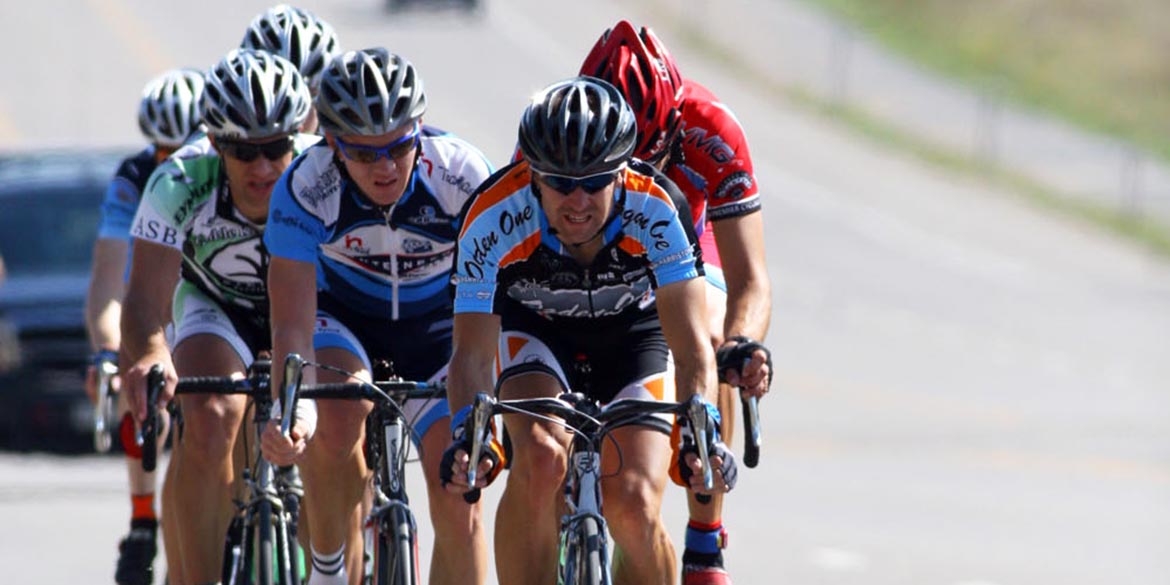
CAMERON HOFFMAN
Clearfield, Utah
LOTOJA Preparation and Racing
I’ve been cycling since I was 11 years old. I did my first century when I was 12, started racing and have never stopped pedaling or racing since. When I turned 17, I started competing with the Cat 1-2’s — racing 100 plus miles on the road including several stage races. When I turned 19, I began competing at an international level going distances of 125 plus miles. I thought 125 plus mile days were long and very draining, but LoToJa is an entirely different animal!
When I was considering doing LoToJa for the first time my thoughts were, “The race is too far and way too exhausting to be enjoyable. 200 plus racing miles and nine plus hours on the bike; a race pace with 30 plus Cat 1-2 Pro’s — this can’t be fun!” However, I finally committed to my first LoToJa in 2007, clearly understanding that preparation was the key to completing, let alone winning the Cat 1-2 race. If I wanted success, preparation was paramount.
While preparing and training with LoToJa veterans I asked as much as I could about different aspects of the race. Normally, when preparing for a 100 mile Pro road race, I would put only some thought into pre-race food, race food, race strategy and tactics. Not knowing the LoToJa course, terrain, general wind directions, grade and length of the mountains put me in a difficult strategic position. LoToJa is an ENTIRE DAY of racing, so preparation is more important than race strategy or tactics. I understood that pre-race food, hydration and race day regiment meant EVERYTHING!
Pre-Race Preparation
During 2007, I had been consistently training and racing since February. Therefore, as time drew closer to August and September, I already had a solid base of racing and training in my legs. The month of August I did two 120 mile rides (yes—that was the longest riding I did before LoToJa). However, those miles were mostly up and down very big hills maintaining a strong pace. I also continued to “pick the brains” of LoToJa veterans. Most of my questions were about food, hydration and general preparation. I received some great advice.
1. Get in some good, long miles with big hill climbs
2. Practice eating race day food
3. Eat complex carbs (pasta’s and rice) 3 days in advance
4. Hydrate 3 days in advance
5. Consistently massage the legs
6. Stay consistent with multi-vitamin supplements (many nutrients take weeks for full and proper absorption)
7. Get a good nights sleep before the race
8. Eat a solid breakfast. I ate 4 French Toast (using Texas Toast) slices with butter and syrup
9. In the morning see the “white throne,” YES, try to pass a stool in the morning before the race
During the Race
Like everybody else, I could not have accomplished this race without my trusted support crew (Chris & Lydia). They needed to know exactly what I wanted at each feed zone so I mapped out each feed zone by hour/mileage markers and set up my request for food accordingly. I typed up a list of liquid and food for each feed zone.
I won’t give away my race strategy or tactics here (can’t let my competition know my tricks) but I will go into how I managed my preparation. Basically, I looked at the entire LoToJa race as an entire day on the bike. That means that I would need to eat more breakfast and lunch while on the road. I had a goal of ALWAYS having food in my stomach. Here’s the exact food itinerary I gave my support crew.
1. Before Start in Logan - breakfast, french toast
2. Preston - 2 Gatorade bottles, 1 peanut butter and jelly sandwich
3. Strawberry Canyon - Neutral feed
4. Montpelier - 2 Gatorade bottles, 1 ham and cheese sandwich
5. Allred Flat - Neutral feed
6. Afton - 1 Gatorade, 1 Rockstar (in bottle)
7. Town of Alpine - 1 Gatorade, 1 Rockstar (in bottle)
8. Snake River (Kings Wave) - Neutral feed
9. Sandwich and Pizza after the finish
Not on this list is the 6 GU’s and 3 Clif Bars that I ate but held in my pockets.
At each feed zone, I did something that was probably a novice move, however it was extremely effective. I instructed my support crew that instead of fumbling around with musset bags — worrying about slinging it over my shoulder, digging for food and bottles, while risking losing balance and crashing — I would simply stop the bike, replace bottles, grab food, say a few words then be on my way. I strongly suggest the same technique. While everybody else risked crashing and fumbling around with their bags (going slow anyway), I made a quick replenish then was off.
Post Race
Food! I drank plenty of liquid and ate adequately; however I was ready for more food after the finish. Post-race food should not be neglected. I feasted on some greasy pizza within 30 minutes of finishing, then more dinner food around 9 PM. Like anybody, my legs were super tired, body was exhausted and I was ready for a good nights sleep.
Conclusion
Many were surprised that I won the 2007 Cat 1-2 LoToJa on my first attempt at the race. I drew from the experience of other veterans to put together my training and food plan for the event and from all the information LoToJa veterans provided. I quickly learned that my food intake was more important than my fitness. After all, an athlete does not function well without proper nutrition.
Cameron Hoffman
2007-2009 and 2014 LoToJa Category Winner: Mens Pro, Cat 1/2/3